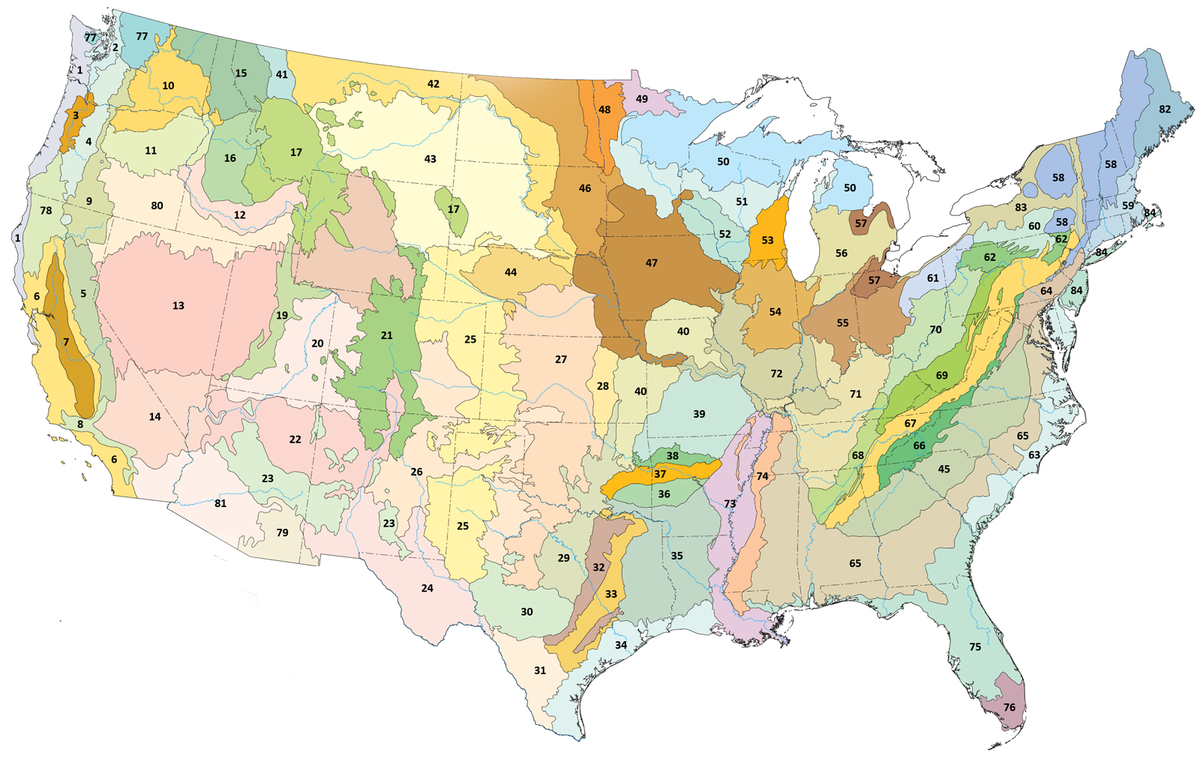 | ||
This list of ecoregions in the United States provides an overview of United States ecoregions designated by the U.S. Environmental Protection Agency (EPA) and the Commission for Environmental Cooperation (CEC). The CEC was established in 1994 by the member states of Canada, Mexico, and the United States to address regional environmental concerns under the North American Agreement on Environmental Cooperation (NAAEC), the environmental side accord to the North American Free Trade Agreement (NAFTA). The Commission's 1997 report, Ecological Regions of North America, provides a framework that may be used by government agencies, non-governmental organizations, and academic researchers as a basis for risk analysis, resource management, and environmental study of the continent's ecosystems. In the United States, the EPA and the United States Geological Survey (USGS) are the principal federal agencies working with the CEC to define and map ecoregions. Ecoregions may be identified by similarities in geology, physiography, vegetation, climate, soils, land use, wildlife distributions, and hydrology.
Contents
- Marine West Coast Forest
- Western Forested Mountains
- Mediterranean California
- North American Deserts
- Temperate Sierras
- Great Plains
- Eastern Temperate Forest
- Northern Forests
- Tropical Wet Forests
- Southern Semi Arid Highlands
- Taiga
- Tropical and Subtropical coniferous forest
- Tundra
- Listings by state
- References
The classification system has four levels, but only Levels I and III are shown on this list. Level I divides North America into 15 broad ecoregions; of these, 12 lie partly or wholly within the United States. Fifty Level II regions were created to allow for a narrower delineation of Level I areas. Three level I areas were not subdivided for level 2. Level III subdivides the continent into 182 smaller ecoregions; of these, 104 lie partly or wholly with the United States. Level IV is a further subdivision of Level III ecoregions. Level IV mapping is still underway but is complete across most of the United States. For an example of Level IV data, see List of ecoregions in Oregon and the associated articles. The classification system excludes the U.S. state of Hawaii, which is not part of the North American mainland.
Marine West Coast Forest
The corresponding CEC ecoregion in Canada is called the Pacific Maritime Ecozone.
Western Forested Mountains
The corresponding CEC ecoregion in Canada is called the Montane Cordillera Ecozone.
Mediterranean California
North American Deserts
Temperate Sierras
Great Plains
The corresponding name in Canada for the same ecoregion is the Prairies Ecozone.
Eastern Temperate Forest
These forests stretch from the Southern Appalachians towards Canada, up to the northern Midwest. For a general description of these forests, refer to Temperate Deciduous Forest. The standard reference is The Deciduous Forest of Eastern North America. The adjoining forests in Canada are generally referred to as the Mixedwood Plains Ecozone or the Great Lakes-St.Lawrence Forest Region.
Northern Forests
The corresponding name in Canada for the same ecoregions are the Boreal Shield and the Atlantic Maritime Ecozones.
